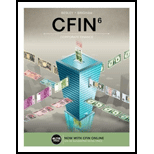
Concept explainers
The graph which shows the relationship between yields and maturities on a particular date is known as the yield curve, and this relationship is simply called the term structure of securities. The yield curve could be upward sloping where the long-term yields are higher than the short-term yields and is also known as normal yield curve. However, if the long-term yields are lower than the short-term yields then the slope with be downward sloping and is referred to as inverted or abnormal yield curve.
Interest rate consists of risk-free rate, real risk-free rate and inflation premium, and a risk premium such as liquidity risk (LP), default risk (DRP) and maturity risk (MRP). Since, real risk-free rate generally remains constant, it is the changes in the expectation of risk premium and inflation which affects the interest rate of the security. Hence, inflation expectation is the most significant reason for changes in yield and determination of yield curve.
Interest rate or yield on treasuries can be determined using the below equation, where default risk premium DRP and liquidity premium (LP) is zero, as treasuries are considered as liquid and default free investment. Maturity risk premium (MRP) is there as they have differing maturity securities issued.
Expectation theory states that the shape of the yield curve depends on the expectation of future inflation rate and hence an increasing inflation rate will result in an upward sloping curve whereas a decreasing rate would result in downward sloping curve.
Inflation is expected to be 1.5% in Year 1 and Year 2 and would settle for a rate greater than 1.5% thereafter. Yield in year 1 and 2 will remain the same and on 3-year bond will be 0.5% more than yield in Year 1 and 2. The bond is risk free and has a real risk-free rate of 2%.
Want to see the full answer?
Check out a sample textbook solution
Chapter 5 Solutions
CFIN (with MindTap Finance, 1 term (6 months) Printed Access Card) (MindTap Course List)
- How has AirBnb negatively affected the US and global economy? How has Airbnb negatively affected the real estate market? How has Airbnb negatively affected homeowners and renters market? What happened to Airbnb in the Tax Dispute in Italy?arrow_forwardHow has AirBnb positively affected the US and global economy? How has Airbnb positively affected the real estate market? How has Airbnb positively affected homeowners and renters market?arrow_forwardD. (1) Consider the following cash inflows of a financial product. Given that the market interest rate is 12%, what price would you pay for these cash flows? Year 0 1 2 3 4 Cash Flow 160 170 180 230arrow_forward
- Explain why financial institutions generally engage in foreign exchange tradingactivities. Provide specific purposes or motivations behind such activities.arrow_forwardA. In 2008, during the global financial crisis, Lehman Brothers, one of the largest investment banks, collapsed and defaulted on its corporate bonds, causing significant losses for bondholders. This event highlighted several risks that investors in corporate bonds might face. What are the key risks an investor would encounter when investing in corporate bonds? Explain these risks with examples or academic references. [15 Marks]arrow_forwardTwo companies, Blue Plc and Yellow Plc, have bonds yielding 4% and 5.3%respectively. Blue Plc has a credit rating of AA, while Yellow Plc holds a BB rating. If youwere a risk-averse investor, which bond would you choose? Explain your reasoning withacademic references.arrow_forward
- B. Using the probabilities and returns listed below, calculate the expected return and standard deviation for Sparrow Plc and Hawk Plc, then justify which company a risk- averse investor might choose. Firm Sparrow Plc Hawk Plc Outcome Probability Return 1 50% 8% 2 50% 22% 1 30% 15% 2 70% 20%arrow_forward(2) Why are long-term bonds more susceptible to interest rate risk than short-term bonds? Provide examples to explain. [10 Marks]arrow_forwardDon't used Ai solutionarrow_forward
- Don't used Ai solutionarrow_forwardScenario one: Under what circumstances would it be appropriate for a firm to use different cost of capital for its different operating divisions? If the overall firm WACC was used as the hurdle rate for all divisions, would the riskier division or the more conservative divisions tend to get most of the investment projects? Why? If you were to try to estimate the appropriate cost of capital for different divisions, what problems might you encounter? What are two techniques you could use to develop a rough estimate for each division’s cost of capital?arrow_forwardScenario three: If a portfolio has a positive investment in every asset, can the expected return on a portfolio be greater than that of every asset in the portfolio? Can it be less than that of every asset in the portfolio? If you answer yes to one of both of these questions, explain and give an example for your answer(s). Please Provide a Referencearrow_forward
 EBK CONTEMPORARY FINANCIAL MANAGEMENTFinanceISBN:9781337514835Author:MOYERPublisher:CENGAGE LEARNING - CONSIGNMENT
EBK CONTEMPORARY FINANCIAL MANAGEMENTFinanceISBN:9781337514835Author:MOYERPublisher:CENGAGE LEARNING - CONSIGNMENT
 Intermediate Financial Management (MindTap Course...FinanceISBN:9781337395083Author:Eugene F. Brigham, Phillip R. DavesPublisher:Cengage Learning
Intermediate Financial Management (MindTap Course...FinanceISBN:9781337395083Author:Eugene F. Brigham, Phillip R. DavesPublisher:Cengage Learning- Principles of Accounting Volume 1AccountingISBN:9781947172685Author:OpenStaxPublisher:OpenStax College



